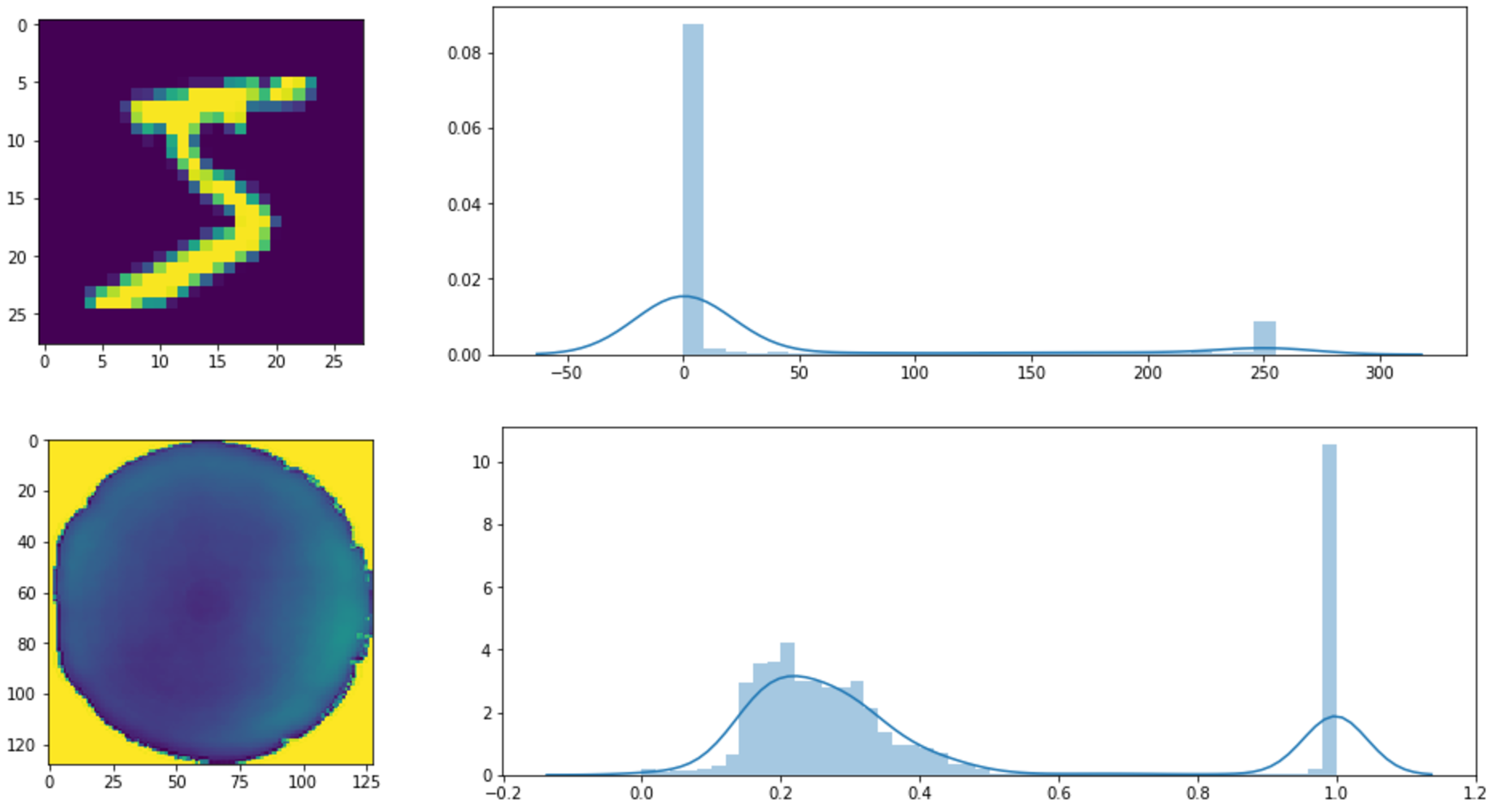I'm doing experiments with GAN. I've successfully trained GAN on 28x28px MNIST dataset (samples scaled to (-1,1) interval)
My next experiment is to train GAN on bigger images. My dataset consists of grayscale 128x128px images. I've added one more convolutional layer to both generator and discriminator and updated dense layers accordingly.
Sample from MNIST dataset and sample from my custom dataset:

However, when I trained the model, all results from generator looks like this:
What am I doing wrong? Why does the generator generate only this noise pattern instead of samples from my dataset distribution?
Generator:
H = Sequential()
H.add(Dense(1024, input_shape=(noise_dim,)))
H.add(BatchNormalization())
H.add(Activation('relu'))
H.add(Dense(128*16*16))
H.add(BatchNormalization())
H.add(Activation('relu'))
H.add(Reshape([16, 16, 128]))
H.add(Conv2DTranspose(128, (3, 3), strides=(2, 2), padding='same'))
H.add(BatchNormalization())
H.add(Activation('relu'))
H.add(Conv2DTranspose(64, (3, 3), strides=(2, 2), padding='same'))
H.add(BatchNormalization())
H.add(Activation('relu'))
H.add(Conv2DTranspose(32, (3, 3), strides=(2, 2), padding='same'))
H.add(BatchNormalization())
H.add(Activation('relu'))
H.add(Conv2DTranspose(1, (3, 3), padding='same'))
H.add(Activation('tanh', name='out_image'))
gen_in = Input(shape=(noise_dim,), name='in_noise')
gen_out = H(gen_in)
Discriminator:
H = Sequential()
H.add(Conv2D(32, (3, 3), strides=(2, 2), padding='same', activation='relu', input_shape=(128, 128, 1)))
H.add(LeakyReLU(0.2))
H.add(Conv2D(64, (3, 3), strides=(2, 2), padding='same', activation='relu'))
H.add(BatchNormalization())
H.add(LeakyReLU(0.2))
H.add(Conv2D(128, (3, 3), strides=(2, 2), padding='same', activation='relu'))
H.add(BatchNormalization())
H.add(LeakyReLU(0.2))
H.add(Flatten())
H.add(Dense(1024))
H.add(BatchNormalization())
H.add(LeakyReLU(0.2))
H.add(Dense(1, activation='sigmoid', name='out_binary'))
disc_in = Input(shape=(128, 128, 1), name='in_image')
disc_out = H(disc_in)


